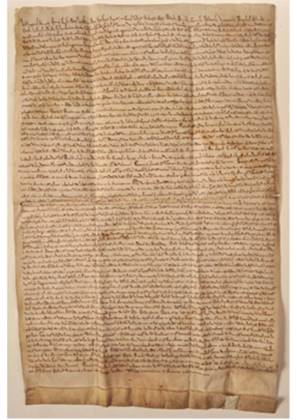|
|
|
|
|
|
|
|
|
| |
|
|
|
|
theHoustonMuseumofnaturalscience
Magna Carta Lectures
Interview with the Curator
Link

Magna Carta Lectures
Tickets $18, Members $12
www.hmns.org/lectures
“A Universal Charter? The Legacy of Magna Carta”
Sir Robert Rogers, House of Commons
Text From Lecture
Slides From Lecture
Combined Text and Slides
Wednesday, February 19, 6:30 p.m.
Nearly eight centuries ago, twenty-five barons wait, under fluttering
pennants, for King John to round the bend in the river. The events of that
day underpin our modern concepts of liberty, freedom and justice. But why,
and how did Magna Carta come about? What distinguished it from other Great
Charters of early mediaeval times? What did it really say and why? How did
it then become embedded in the consciousness of the people of England before
travelling the world? And most importantly, what does it mean for us today?
Sir Robert Rogers is the Clerk of the British House of Commons—an office
that dates back to 1363.
“13th Century Sword & Buckler: Origins of the Knightly Fighting
Arts”
John Clements, ARMA
Wednesday, February 26, 6:30 p.m.
The liberal arts in medieval times were those subjects studied by a free
man—who was free precisely because he was armed and trained in the fighting
arts. Much of what is known of 13th-century sword and buckler training is
documented in the only surviving fencing manual of the period. John
Clements, martial arts historian and director of ARMA (Association for
Renaissance Martial Arts), will describe the science of defense developed in
this period, as well as the arms, armor and chivalric work of knights. The
lecture will be followed by a demonstration. This lecture will be followed
by a live demonstration of medieval martial arts.
“Conquest, Wars and Liberties of the Realm: the Long Run-Up to Magna Carta”
Bruce O’Brien, Ph.D., Univ. of Mary Washington
Wednesday, March 12, 6:30 p.m.
To understand Magna Carta, one has to understand England’s past. Much has to
do with the obligations of kings and their subjects, which was a point of
negotiation. This process is writ large in pre-conquest Anglo-Saxon laws, in
the monuments of the Norman kings such as Domesday Book and the coronation
charter of Henry I, and in the legal reforms instituted by Henry II, which
formed the basis for what came to be known as the Common Law. Cosponsored by
Rice University’s Glasscock School of Continuing Studies
“Medieval Genealogy”
Wednesday, April 16, 6 p.m.
Do you have royal lineage? Are you a descendant of a rebellious baron?
Genealogy researcher Lynna Kay Shuffield will review tips to help you trace
your family to medieval Europe. For those with English roots there is a fair
chance you may find a Magna Carta link. Over 3,000 Texans are currently
registered as descendants of the Magna Carta Dames and Barons from
Runnymede. You do not need to be an avid genealogy researcher to enjoy this
program.
More Magna Carta Programs
www.hmns.org/adults
Adult Class -
Calligraphy, From Quill to Pen
Thursday, May 15, 9:30 a.m. – 3 p.m.
Saturday, June 21, 9:30 a.m. – 3 p.m.
Calligraphy—from
ancient Greek kallos
for “beauty”
and graphe for
“writing”—
is a visual art dating back to at least 5,000 BC, although our western
letter forms were standardized during in the 8th century. In this
beginner-level class, Cindy Haller, Houston Calligraphy Guild instructor,
will teach you to use a dip pen (our modern answer to the quill) and ink to
create the Italic script, and
introduce you to the history of English
script writing. All supplies are provided and are yours to keep.
Participants must be 15 years of age or older.
Behind-the-Scenes Tour -Magna
Carta
Monday, April 14, 6 p.m.
Cultural Feast - “A
Medieval Culinaria”
Tuesday, April 29, 7 p.m.
Hosted at Tony’s
Aristocratic dining at the time of Magna Carta fused Anglo-Saxon and Norman
traditions with exotic flavors and ingredients introduced by Crusaders
returning from the Holy Land via Mediterranean islands such as Sicily and
Cyprus. In addition, family ties, including the marriage of King John’s
sister to William II of Sicily, played an important role in this culinary
fusion. Feasting, revelry and courtly manners were important markers of
prestige and power. Explore the culinary world of the barons and King John.
Tony Vallone and culinary historian Merrianne Timko have created a menu
inspired by these historical complexities to delight our modern palates.
| Copyright 2007 - 2014 Genealogical Services, Inc.,
Wyndmoor, PA All Rights Reserved |